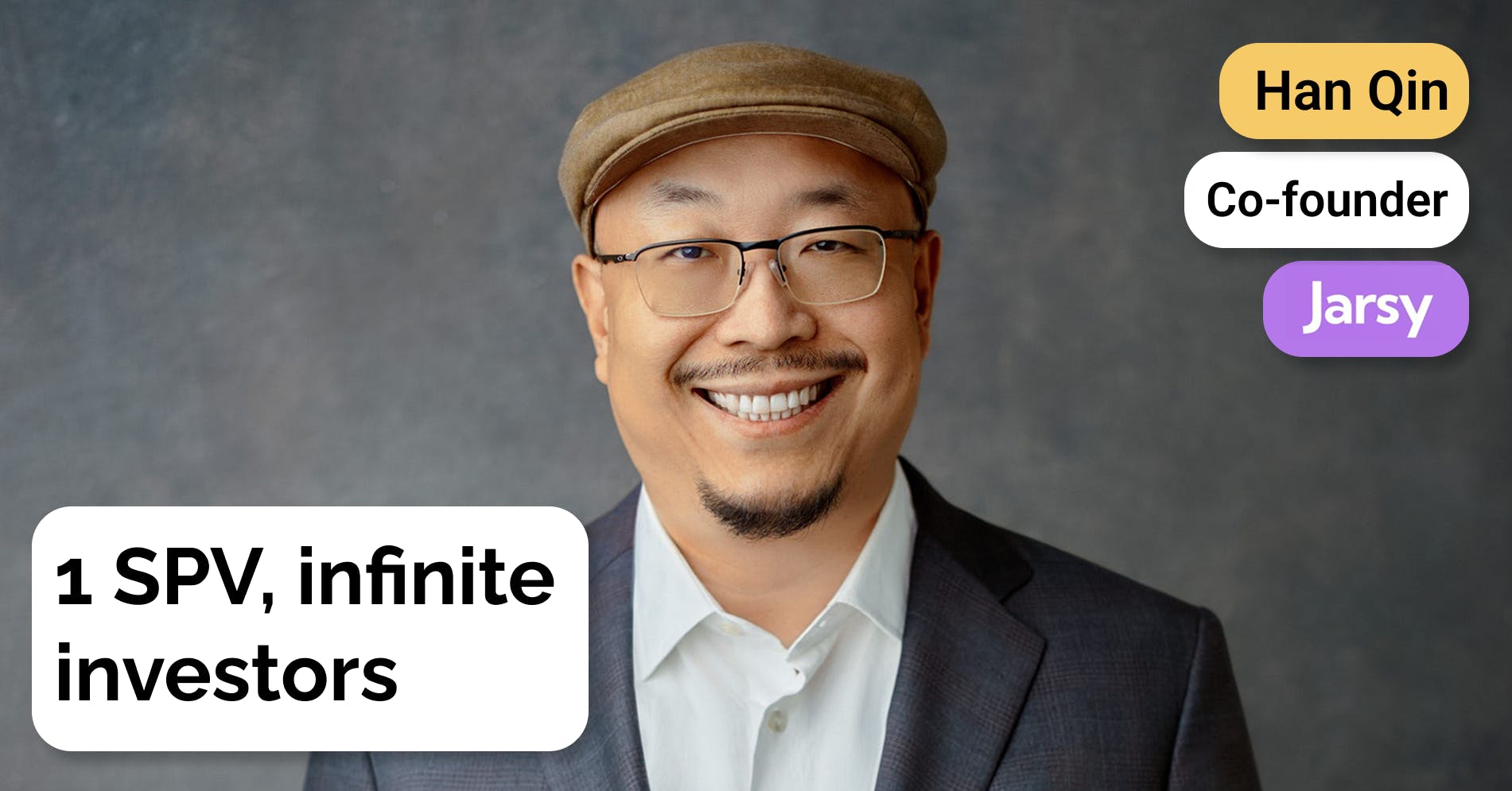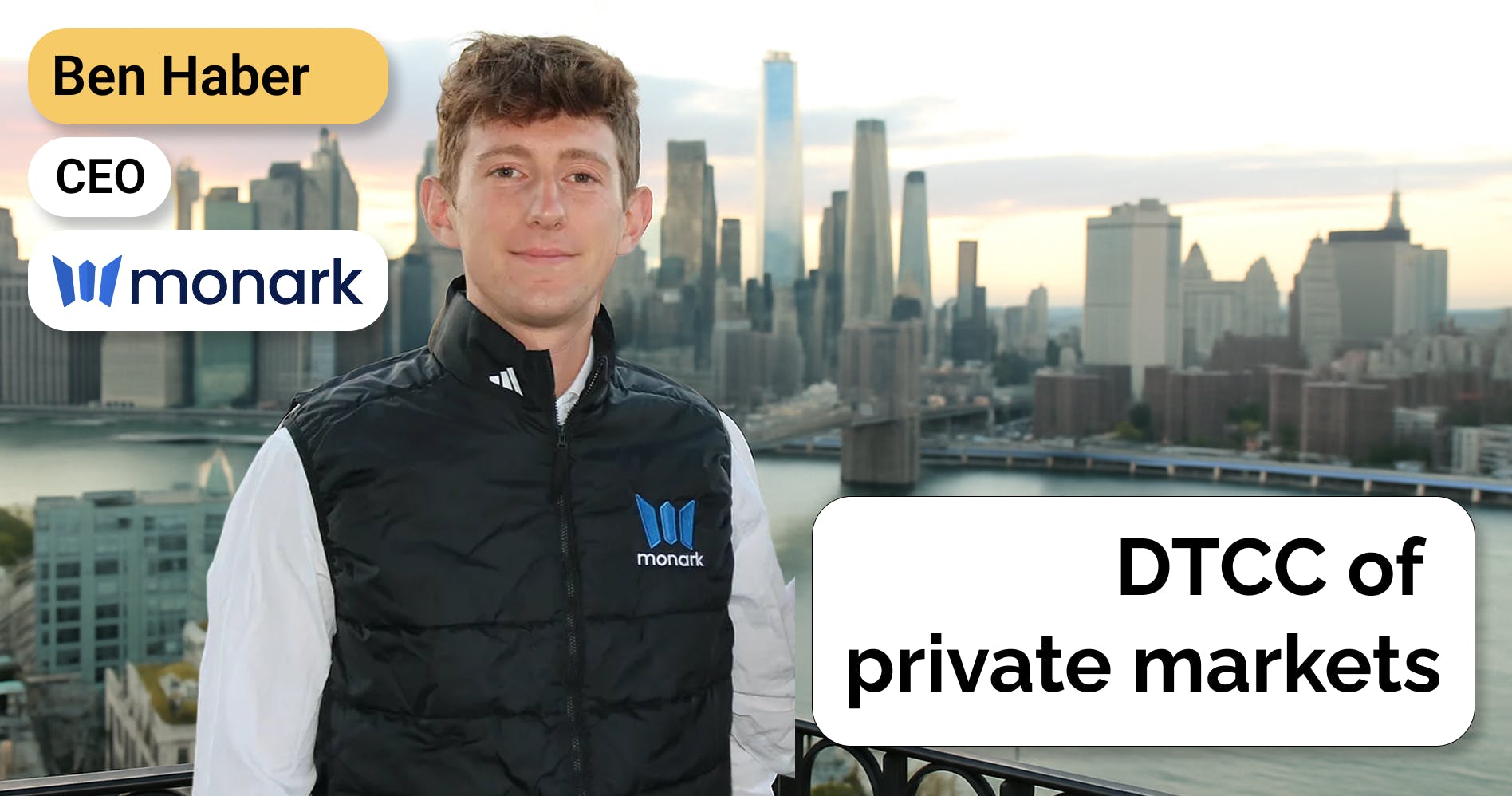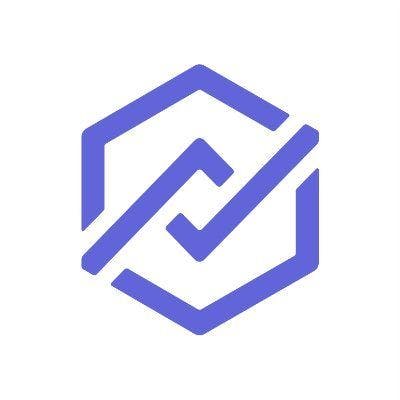Han Qin, co-founder & CEO of Jarsy, on the rise of fractional pre-IPO investing
 Jan-Erik Asplund
Jan-Erik Asplund

Background
We’ve covered the tokenization of private stock through interviews with PreStocks founder Xavier Ekkel and EquityZen CEO Atish Davda.
To learn more about the emerging markets for fractional secondary trading on blockchain rails, we reached out to Han Qin, CEO and co-founder of Jarsy.
Key points from our conversation via Sacra AI:
- During 2017-2018, initial coin offerings (ICOs) showed extreme product-market fit for capital formation but failed investors by severing economic rights from company performance through "utility token" gymnastics needed to dodge securities law, leaving token holders with no claim on revenue & inspiring today's tokenized private & public stock securities to focus on delivering economic rights under existing regulations like Reg D and Reg S. “ICOs were amazing and definitely innovative. . . The problem, or what's lacking, is more on the user rights side. What are the rights of getting that token? Most projects claim that it's a utility token, not a security token, so that they don't have to deal with the SEC. From our perspective, compliance is the gap. When you invest in a company, maybe you don't care about voting power—you care more about the return.”
- Just as millennial demand drove Robinhood to fractionalize Tesla and Apple shares, millennial HENRYs with disposable income but sub-accredited net worth are now demanding fractional SpaceX and Stripe ownership—but in most cases, the most democratic and accessible option available to them is 3rd and 4th-layer SPVs that come with smaller minimum ticket sizes but increased risk & far higher costs. “One thing that's more common from both worlds is young people in their 20s or maybe early 30s. . . HENRYs—High Earners, Not Rich Yet. . . They already make a lot of money and they don't have a million-dollar net worth yet, but they have several thousand dollars to invest. That's more common from both worlds.”
- With Robinhood and Kraken already live with 24/7 tokenized Tesla and Apple trading, and Nasdaq announcing plans to tokenize its entire public market by 2025, the endgame isn't a separate category of "blockchain-based securities" but blockchain becoming invisible settlement infrastructure, the same way Venmo users don't think about ACH. “We already see that Nasdaq announced that next year they're going to tokenize public stocks, and Robinhood is pushing that as well. . . Blockchain will be like running water in five, 10, 20 years. At that moment, people just feel like, ‘Yeah, this is just a service. I'm buying a stock, I'm buying a house, I'm getting a loan, I'm getting insurance,’ but on the back end, those are really on the blockchain. People use stablecoins everywhere, but they feel like that's normal.”
Questions
- What is Jarsy in short? What inspired you to start the company?
- What did your experiences at Uber, Afterpay & Block teach you about building consumer & fintech products that has shaped your approach at Jarsy?
- Are folks who are really interested in Jarsy typically people who are interested in pre-IPO companies or folks who are very tapped into crypto, or is it some kind of mixture? How do you see that right now?
- You chose to build on Base rather than Solana or Ethereum. Walk us through that decision—what does Base unlock for Jarsy that other chains don't?
- Can you speak to how you develop supply? Do you have SPVs getting directly on the cap table, that sort of thing?
- Traditional secondary platforms built their businesses around issuer alignment—getting on cap tables, earning company trust, being a "friendly shareholder." Jarsy operates without that. How do you think about the tradeoffs of that approach?
- The big complaint about traditional private secondaries is fragmentation—too many intermediaries taking cuts, inflating prices, and slowing liquidity. Do you see tokenization as a way to address this?
- In crypto, there was a big push around initial coin offerings. Could you explain what the promise of ICOs was, to what extent it worked out, and how what we’re talking about now is different?
- Can you talk a little bit about where Jarsy is geographically active and how it's different by compliance regime in different places?
- What is your take so far on the Trump administration? It's been talked about a lot as being very crypto-friendly, very stablecoin-friendly. Do you see things sort of moving in a good direction for tokenization of private stock?
- What are the pre-IPO companies that you're seeing the most demand for? You mentioned SpaceX, but is it sort of like there's a handful of names that drive 80% of the demand, or is it kind of a long tail of companies people are interested in? What does that look like on your end?
- When companies have different kinds of corporate actions—there's splits like Scale, there's the 49% company acquisition by Meta—how do those work? If you're a holder of a company that has some kind of corporate action via Jarsy, what do I see as a user? How is that handled on the back end?
- Another big thing with DeFi is this idea of the ecosystem and having things be composable so that you can bring assets into different kinds of apps—things being very extensible. Is that within your vision of what Jarsy will be in the future? And if you've thought about that, what are some examples of what that might look like?
- If we looked at the future—let's say a five or ten year time horizon—do you see all, or a majority, of pre-IPO secondary trading moving to blockchain? Or do you see it being certain use cases that live alongside traditional SPVs, or certain geographies? How do you see that?
- Same question, but with a five-year time horizon. If everything goes right for Jarsy, what do you see Jarsy becoming at that point?
- You talked about Base being a great choice from a compliance point of view. Could you say a little more about why that's true? Besides it being tied to Coinbase, which is sort of the most regulatorily approved company in crypto, are there structural aspects to it that make it preferable from a compliance point of view versus Solana or Ethereum?
- Is there anything that we didn't talk about that you think is important and want to mention?
- Stablecoins and traditional finance are getting combined with crypto in many ways. Do you think it's sort of a 50/50 combination? Or does traditional finance eat crypto, or the other way around? How do you think about that?
Interview
What is Jarsy in short? What inspired you to start the company?
Jarsy develops infrastructure to make private-market participation more efficient for eligible investors. This has mainly been a closed-gate product for institutions or high net worth individuals. But now Jarsy is leveraging blockchain technology to offer this opportunity to eligible participants under applicable regulations.
What did your experiences at Uber, Afterpay & Block teach you about building consumer & fintech products that has shaped your approach at Jarsy?
I joined Facebook in 2010, Uber in 2014, and Afterpay in 2018—all in their early days, pre-product or early stage. Luckily, I worked with three self-made billionaires: Mark Zuckerberg, Travis Kalanick, and Nick Molnar. They trained me in certain ways and worked on different things with different personalities, but there's one thing consistent across all of them. They taught me that if you want to create something new, solve a new problem, create something category-defining that no one has seen before—look at Gen Z and millennials, the young folks. What are their pain points? Because their behavior is very different than previous generations.
When we started thinking about our own journey, we talked to Gen Z and asked them what their pain points were at this life stage. They said, "We want to invest in SpaceX, but we can't." That's a real pain because it feels like an opportunity loss. They love Elon Musk, they love the mission to go to Mars, they want to support it, and they want to be part of it as well. We know that if you have big money, you can. But if we have several hundred dollars or $7,000, it seems like we cannot. At the same time, we can buy memecoins—no one tries to block us there. What's going on?
It's not just US Gen Z—it's global. They all have the same information. They have Internet access. They're digital natives. We felt like we've been serving consumers, especially Gen Z, many times before. This is our strength, so let's build it. That's why we created Jarsy. We wanted to focus on this consumer-facing fintech product again, not just because we love it, but because users want it.
Are folks who are really interested in Jarsy typically people who are interested in pre-IPO companies or folks who are very tapped into crypto, or is it some kind of mixture? How do you see that right now?
It's actually both—about half and half. It could be someone already familiar with crypto and blockchain. It could be someone who's never really used blockchain before, but there's a desire to invest in SpaceX, so that's the gateway. Both worlds are interested.
One thing that's more common from both worlds is young people in their 20s or maybe early 30s. They don't have quite a lot of wealth yet, but they have good income. There's a term for this: HENRYs—High Earners, Not Rich Yet. They could be from the Web3 world because in Web3 you have high income if you're a KOL or a trader that makes a lot of money. Or you come from the Web2 world. We're based in Silicon Valley, and we have a lot of friends who work at Facebook or Google in their early years. They already make a lot of money and they don't have a million-dollar net worth yet, but they have several thousand dollars to invest. That's more common from both worlds.
You chose to build on Base rather than Solana or Ethereum. Walk us through that decision—what does Base unlock for Jarsy that other chains don't?
This is very critical because this is the foundation. We believe that blockchain is definitely the innovation that's going to change the world. There's one thing that, besides performance, we think is critical for the next step of blockchain for mass adoption. We understand people believe in DeFi and decentralized applications, but blockchain, when we move forward toward mass adoption, needs to have compliance—which is centralized, or maybe decentralized in the future, but there has to be something centralized to make it compliance-first. This is critical and necessary.
When we chose what chain to build on, the number one priority we considered was compliance. Solana is great—we're not saying no to Solana—but we chose Base to start our project because Base is developed by Coinbase, which is a public company on the US stock market. We believe Base, in terms of compliance, is number one. That's why we chose Base.
Can you speak to how you develop supply? Do you have SPVs getting directly on the cap table, that sort of thing?
Traditional secondary platforms like Forge or EquityZen build everything around SPVs. They put those assets in there to protect them, but most importantly, they're selling the membership of those SPVs. That's why the paperwork is heavy, the process is very heavy, everything is not straightforward, and that's why most people aren't able to get in there.
Jarsy's innovation is that we leverage blockchain, but from a structural perspective, we also have SPVs—Delaware-based SPVs that acquire secondaries, no different than EquityZen or Forge. But we're not selling the SPV memberships to our users. We're giving them economic right tokens, which are tied to the underlying assets—one-to-one backed—but have no voting power.
It's not an entitlement to the underlying share, but more like a stablecoin model. It keeps the price the same. When the company IPOs in the future, they can sell the token at the public stock price and get the USDC value back. That's what we're doing. From the supply end, it's not so different from the traditional business, but on the demand side, it's an innovation.
Traditional secondary platforms built their businesses around issuer alignment—getting on cap tables, earning company trust, being a "friendly shareholder." Jarsy operates without that. How do you think about the tradeoffs of that approach?
This is an innovation, so different companies definitely have different views. We know that even in the traditional market, some companies love to approve transactions on the secondary market, and some companies would rather buy it back. It's definitely different.
We see the extremes. OpenAI publicly said that there shouldn't be any tokens of OpenAI, and they pushed back on Robinhood. But there are also companies like Circle that were open to approving transactions and preferred shares.
For those companies, when they look at our model, they understand that on their cap table, the shareholder of record is actually Jarsy. The token owners have nothing to do with the company. They're simply holding an economic right that's issued by Jarsy. So they have no problem with that.
We can see a spectrum here. We believe once we educate users and the industry more—and especially, we hope that regulators can come in and make it more clear—there should be more and more companies welcoming this.
The big complaint about traditional private secondaries is fragmentation—too many intermediaries taking cuts, inflating prices, and slowing liquidity. Do you see tokenization as a way to address this?
The reason we see multiple layers of SPVs happening is that, based on the traditional model, that's the only way you can scale. Normally the first layer SPV has transactions around $50 million or $20 million. The second layer gets a little more fractional—maybe $1 million or half a million. The third layer goes to $200K or something. The industry is trying to lower the barrier, which makes sense for everybody. You get more liquidity, you get more people coming in.
However, the limitation is that extra layers of SPVs increase risk. More importantly, they also increase a lot more cost for the end user. We don't see the future having 10 layers of SPVs. Tokenization can reduce the SPVs to maybe the first layer, if not zero layers.
If companies want to issue tokens by themselves, that's obviously the best. But if we navigate the current path, one layer of SPV should be enough—at most two layers—and then as long as we have tokenization of that layer, we don't need more layers to lower the barrier. You can have 0.01 tokens. That's the power of blockchain.
In crypto, there was a big push around initial coin offerings. Could you explain what the promise of ICOs was, to what extent it worked out, and how what we’re talking about now is different?
ICOs were amazing and definitely innovative. People loved them. They're still working in many ways—a lot of projects raised money from ICOs. From a fundraising perspective, it's still working. The problem, or what's lacking, is more on the user rights side. What are the rights of getting that token?
Most projects claim that it's a utility token, not a security token, so that they don't have to deal with the SEC. From our perspective, compliance is the gap. When you invest in a company, maybe you don't care about voting power—you care more about the return. You want to grow with the company. That's what most investors want.
But ICOs claim that you have voting power, it's a utility token, you just don't have a tie with the company. Maybe they'll buy back, but it doesn't mean that this token has anything to do with the company's revenue or profit in the future.
That's why we see fewer and fewer people super excited about ICOs. That's why we see that Coinbase and Circle still go the IPO path, because they want to share the real benefit with users. We think that Jarsy's model, or tokenization, could find a way between ICO and IPO. If we believe that investors want the economic right or the financial return, and the company wants to keep their voting power clean, that could be something in between.
It's not necessarily an IPO because we still have compliance—for example, in the US, we still have to follow Regulation D for pre-IPOs, where only accredited investors can participate. But we can lower the barrier from an IPO, and we can make it better than an ICO. Maybe in the future we'll find out that this is a better way, or more people will come to explore this.
Can you talk a little bit about where Jarsy is geographically active and how it's different by compliance regime in different places?
I want to talk about blockchain—this is always complicated, and we believe this is a journey. We have to educate the market, educate ourselves, and educate regulators around the world. It could be a decade-long journey, but speaking today, we'll find a way to navigate there. We want to show them that this is the right way to do it.
We launched on blockchain, so naturally we're open to global users. In the US we follow Regulation D, which means only accredited investors in the US can use the product today. This is one step towards our future mission. We hope it's for everybody, but we have to deal with regulation and make moves forward at the same time.
Outside the US, we follow Regulation S, which means that for most countries that aren't sanctioned, for most users who can pass KYC and AML, they're okay to use the product. If we move forward in the future to make it more compliant globally, we definitely have to look into different countries and different regions. But we believe the US is the leading one here. Whenever we see the US come up with a new law, a new act, other countries tend to follow. The Stablecoin Act is definitely one—after the US makes it legal, every other country or region like MiCA or Hong Kong, they have their own Stablecoin Act. Singapore as well. We hope that we can go this US compliance-first approach and then really figure out the global one down the road.
What is your take so far on the Trump administration? It's been talked about a lot as being very crypto-friendly, very stablecoin-friendly. Do you see things sort of moving in a good direction for tokenization of private stock?
Definitely we see a more friendly SEC, a more friendly overall administration as well as the CFTC. We think this is not just the Trump administration—obviously the administration is very friendly to crypto—but we think this is the power from the young voters, the crypto enthusiasts.
They vote for the candidates who prefer to make it more open. We believe that future administrations will be more friendly than what we see now and ongoing. This will be a global trend.
That's why we think tokenization is the future. Of course we'll do it in the right way. We cannot just assume that there's no regulation and throw everything on DeFi—that will cause more problems than it solves. That's why we chose a compliance-first approach.
What are the pre-IPO companies that you're seeing the most demand for? You mentioned SpaceX, but is it sort of like there's a handful of names that drive 80% of the demand, or is it kind of a long tail of companies people are interested in? What does that look like on your end?
It's very consistent with social media—where we see more people talking. SpaceX, xAI, Epic—those hot names definitely have higher transaction volume on Jarsy.
But we do see a lot of long tail cool startups—like Notion, Stripe, Kraken. They're hot as well, so we definitely see a long tail. The trend is very consistent with Twitter hotness.
When companies have different kinds of corporate actions—there's splits like Scale, there's the 49% company acquisition by Meta—how do those work? If you're a holder of a company that has some kind of corporate action via Jarsy, what do I see as a user? How is that handled on the back end?
These are very complicated. That's why Jarsy is in a good position to handle that for the user. Let's say the company we invested in got acquired by another company. On the back end, normally those shares just become the shares of the company that acquired them.
The value is still tied there. So Jarsy still holds those shares, not just in the company before, but the company that acquired them. If that's a public company, that means Jarsy will have public stocks. So those tokens will be one-to-one backed by those shares, and the value keeps the same.
If the pre-IPO company acquired another pre-IPO company, then those tokens become backed by the shares or equity of the parent company. We will keep that relationship the same—maybe we'll just rename the token to reflect that you're actually holding the parent company now. It's the same as a future investment in any pre-IPO company; in this case, you're just passively converting into the parent company because they acquired it.
Another big thing with DeFi is this idea of the ecosystem and having things be composable so that you can bring assets into different kinds of apps—things being very extensible. Is that within your vision of what Jarsy will be in the future? And if you've thought about that, what are some examples of what that might look like?
We believe that we want to solve whatever problems people have. They want to invest in pre-IPO today, so we built it. But a lot of young folks talk about many other things, not just pre-IPO.
They talk about private investing which is really catered only for institutions or ultra-high net worth individuals. They ask, "Can we get that too?" Arts, commodities—there are tens of things that we believe young folks want.
Now we just want to solve the first problem to prove that it works and make sure we can educate everybody around it.
But in the long term, Jarsy's mission is to make private investing easy for everybody—to democratize whatever's not open and make it open. That's why we are really open and looking forward to what else we can serve our users whenever the timing comes.
If we looked at the future—let's say a five or ten year time horizon—do you see all, or a majority, of pre-IPO secondary trading moving to blockchain? Or do you see it being certain use cases that live alongside traditional SPVs, or certain geographies? How do you see that?
We saw that the Internet is eating the world—everything that you can do on the Internet: taxis, grocery, food ordering. We think blockchain as an infrastructure has the same power to really redefine every financial activity in the world.
It's not just because it's a new technology—it reduces cost, increases transparency, and gives people accessibility.
Maybe five years out, not everything will be on blockchain. But we already see that Nasdaq announced that next year they're going to tokenize public stocks, and Robinhood is pushing that as well.
When we see startups and big organizations all moving toward this direction, we know that's the future. Maybe five, 10, maybe 20 years—but the end goal should be that all financial activities are built on-chain, and average users don't really notice that.
Like today, we pull out our phone and we're on the Internet, and every service there is on the Internet. We just feel like that's a service we have. We don't think about whether the infrastructure is on the Internet or not. It's just there, like running water.
Blockchain will be like running water in five, 10, 20 years. At that moment, people just feel like, "Yeah, this is just a service. I'm buying a stock, I'm buying a house, I'm getting a loan, I'm getting insurance."
But on the back end, those are really on the blockchain. People use stablecoins everywhere, but they feel like that's normal.
Same question, but with a five-year time horizon. If everything goes right for Jarsy, what do you see Jarsy becoming at that point?
We definitely have that vision. We hope that we can be the place that when people think of private investing, they come to Jarsy. We hope that it can become a brand like Robinhood today. Actually, some of our users mentioned that we are Robinhood for pre-IPO or private investing.
We love that mission. We hope that we can build that trust by doing everything compliance-first but also doing the right thing for users. Globally, we hope that young folks consider Jarsy as the first place to come if they want to have some investment in pre-IPO.
You talked about Base being a great choice from a compliance point of view. Could you say a little more about why that's true? Besides it being tied to Coinbase, which is sort of the most regulatorily approved company in crypto, are there structural aspects to it that make it preferable from a compliance point of view versus Solana or Ethereum?
Solana and Ethereum are sort of NGOs, actually—the foundation model. They are more open, they are more innovative in many ways. Base is not a foundation model. It's literally owned by Coinbase.
So they have to—and that's also their vision—do everything fully compliant. They have to because they're a public company. They work with the SEC, they work with regulators, and they also pitch them. They have a relationship with them to lay out future laws or acts. That's also a huge point for choosing Base.
At the same time, we see that Base is very strict on compliance. For example, we follow Regulation D in the US. Technically, we believe that if we built on Solana Foundation or Ethereum Foundation and worked with them, they probably could share co-marketing with us.
But the Base team made it very clear that even though we consider that we follow Regulation D, there's no clear guidance from the SEC yet. There's no act, there's no law. So they chose not to promote us.
That's a bummer for us. But we were like, "Okay, that's a point, actually." That shows that they are truly compliance-first. It's not what we want at the moment, but if in the future the SEC has more clear guidance on innovation exemptions and crypto projects, then we will be the first to get promoted by Base.
That will be our advantage. We don't love not getting promoted, of course, but we love their thinking process. We love the principles behind it.
Is there anything that we didn't talk about that you think is important and want to mention?
We touched on this a little bit already—the future that we see. Nasdaq, Robinhood—they are pushing this. To be frank, people love DeFi. They want to make it happen. They want to adopt that technology.
The problem here is that DeFi today tries to stay away from regulation or compliance. They're like, "No, we're decentralized. We don't want to do KYC/AML or accredited investor checks."
We think the future has to get the best from both worlds. We should have the compliance from TradFi, we should have the technology from DeFi.
But both worlds should merge, and actually will merge in five years. The products at that moment will be very different, as long as we have the best people from both worlds trying to move together.
Stablecoins and traditional finance are getting combined with crypto in many ways. Do you think it's sort of a 50/50 combination? Or does traditional finance eat crypto, or the other way around? How do you think about that?
It's probably both. We saw that Wall Street never really shies away from technology. Back then, Wall Street traders actually traded with a bunch of people in a hall. They just had gestures to each other, like in the movies. Now it's computers. We believe that traditional finance people really want to embrace new technology. There's no problem there.
The DeFi folks—many of them are similar or believe in the same thing as us. They want to move toward traditional finance or compliance. That's why we see this RWA type of effort. It won't be one side eating the other side. It probably will be a merge. We'll see more people in traditional finance who are early adopters of technology move forward. And we'll see the DeFi folks or Web3 folks who want to embrace regulation, who want to go compliance-first, actually win early. Those two groups of people will drive the merge.
Disclaimers
This transcript is for information purposes only and does not constitute advice of any type or trade recommendation and should not form the basis of any investment decision. Sacra accepts no liability for the transcript or for any errors, omissions or inaccuracies in respect of it. The views of the experts expressed in the transcript are those of the experts and they are not endorsed by, nor do they represent the opinion of Sacra. Sacra reserves all copyright, intellectual property rights in the transcript. Any modification, copying, displaying, distributing, transmitting, publishing, licensing, creating derivative works from, or selling any transcript is strictly prohibited.










